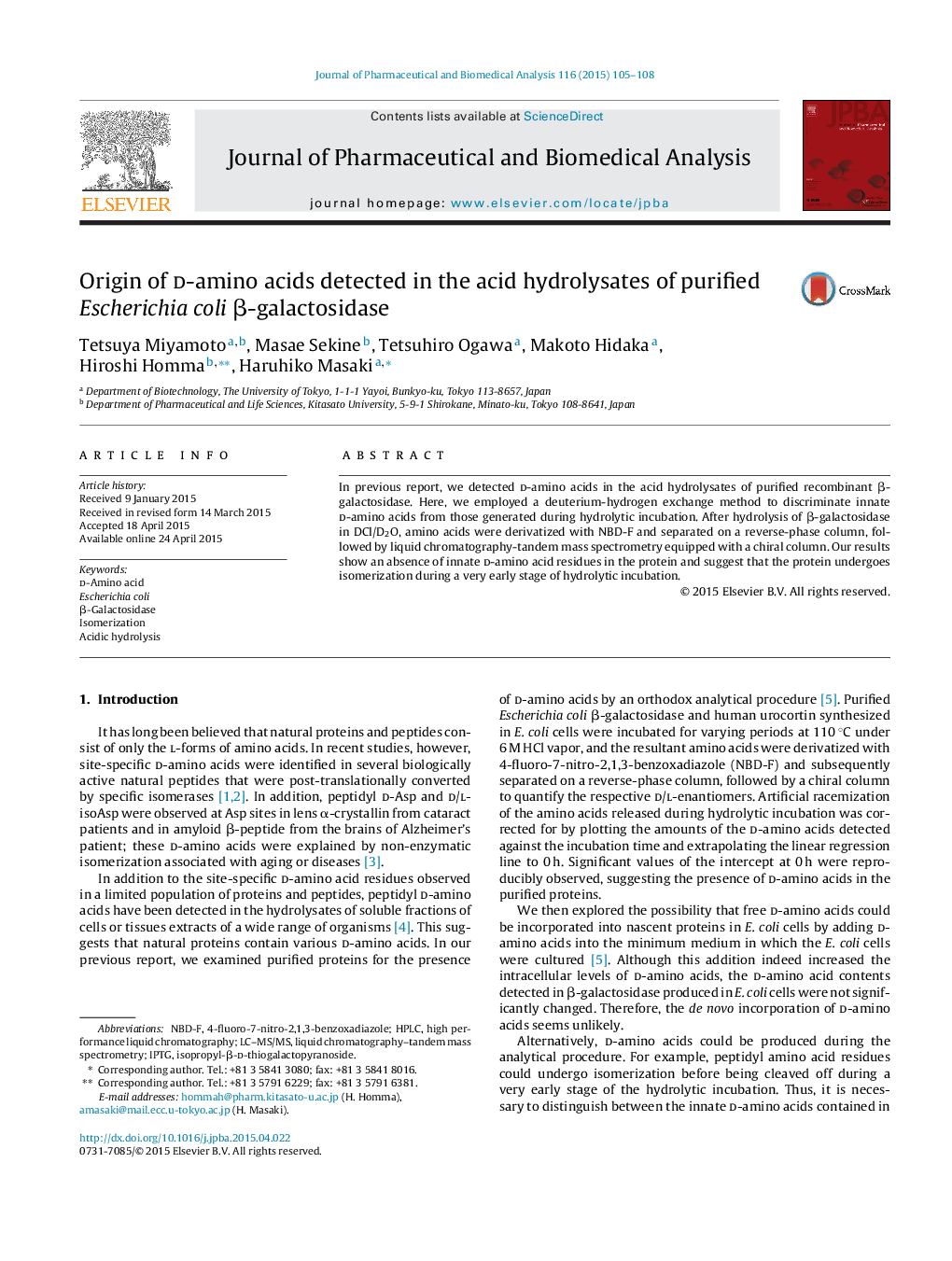| Article ID | Journal | Published Year | Pages | File Type |
|---|---|---|---|---|
| 1220483 | Journal of Pharmaceutical and Biomedical Analysis | 2015 | 4 Pages |
•We have established a new method to detect innate d-amino acid residues in proteins.•Our new method was applied to β-galactosidase which is produced in E. coli cells.•The 0 h-extrapolating values by an orthodox method reflected artificial d-amino acids.•l-Amino acid residues are presumably isomerized in a very early stage of hydrolysis.•Our new method is effective to detect innate d-amino acid residues in proteins.
In previous report, we detected d-amino acids in the acid hydrolysates of purified recombinant β-galactosidase. Here, we employed a deuterium-hydrogen exchange method to discriminate innate d-amino acids from those generated during hydrolytic incubation. After hydrolysis of β-galactosidase in DCl/D2O, amino acids were derivatized with NBD-F and separated on a reverse-phase column, followed by liquid chromatography-tandem mass spectrometry equipped with a chiral column. Our results show an absence of innate d-amino acid residues in the protein and suggest that the protein undergoes isomerization during a very early stage of hydrolytic incubation.
Graphical abstractFigure optionsDownload full-size imageDownload as PowerPoint slide
